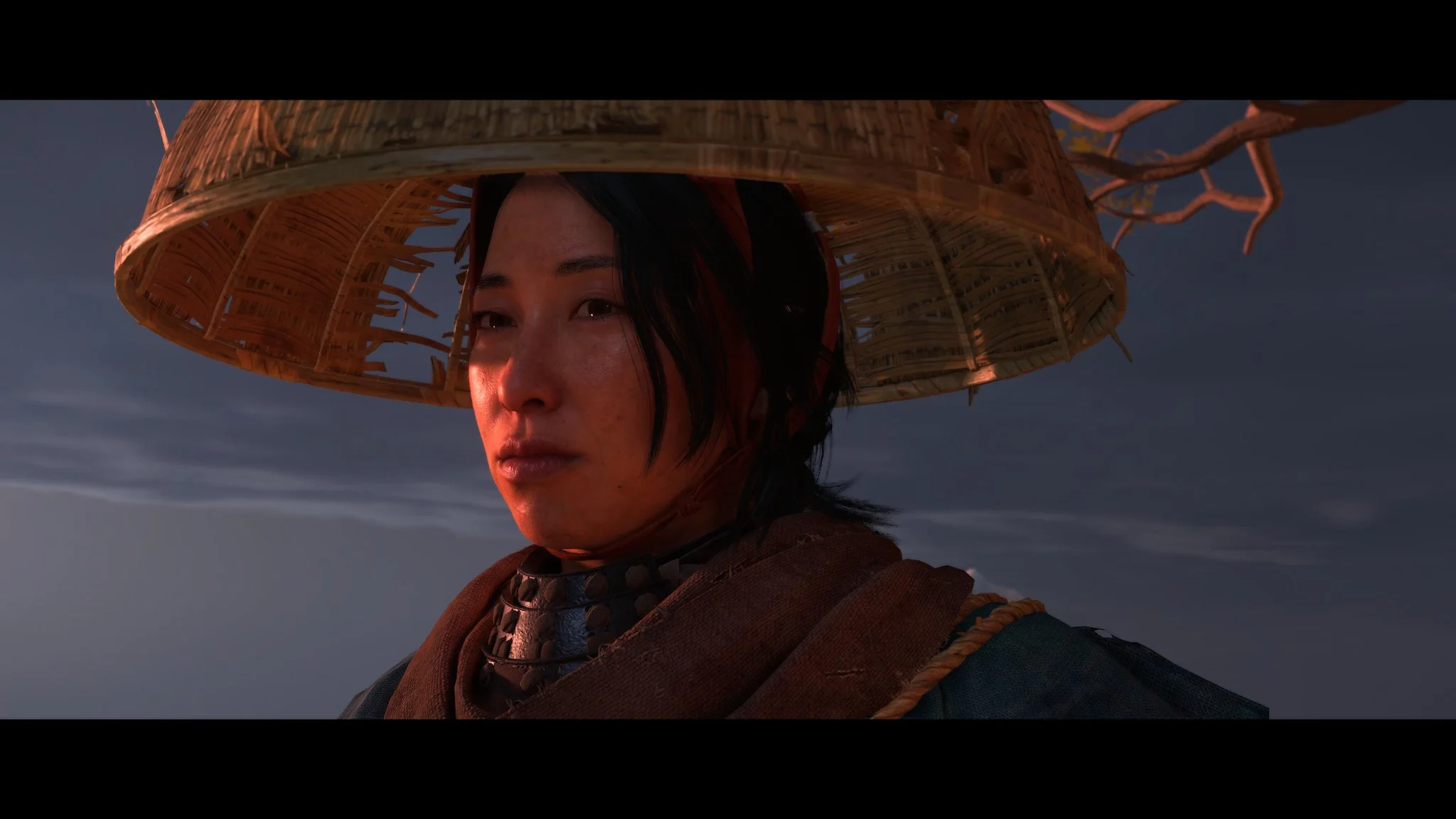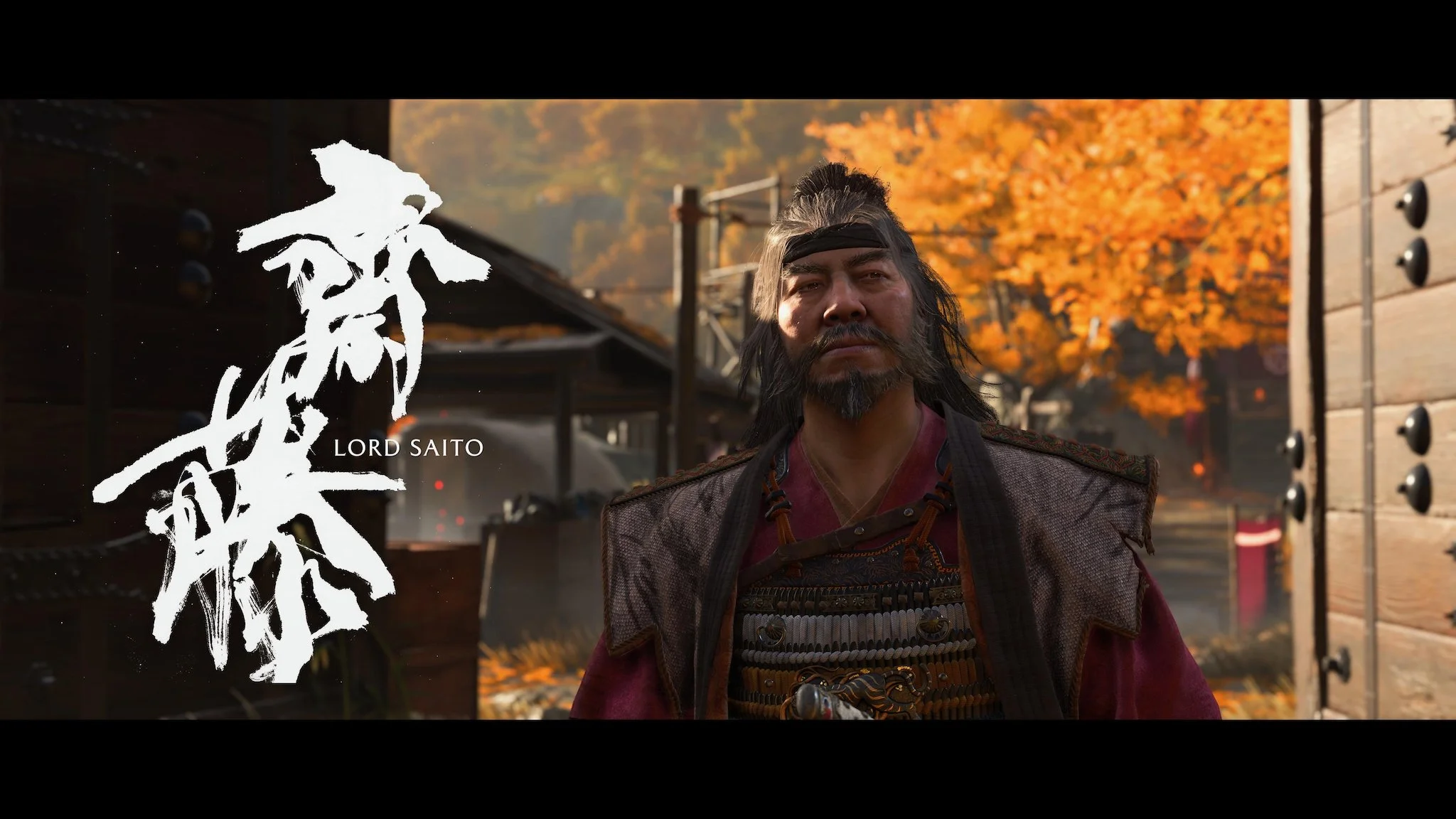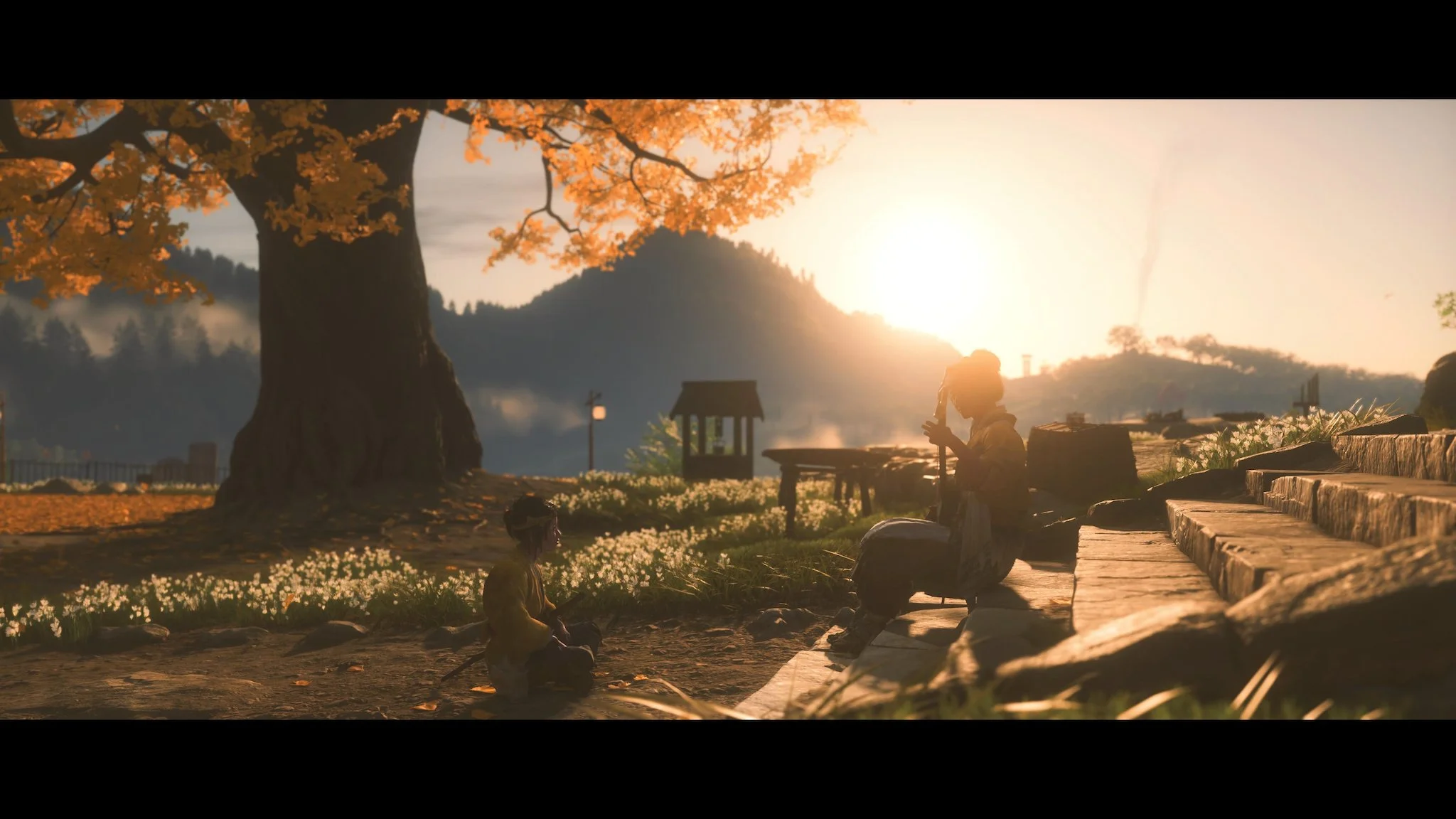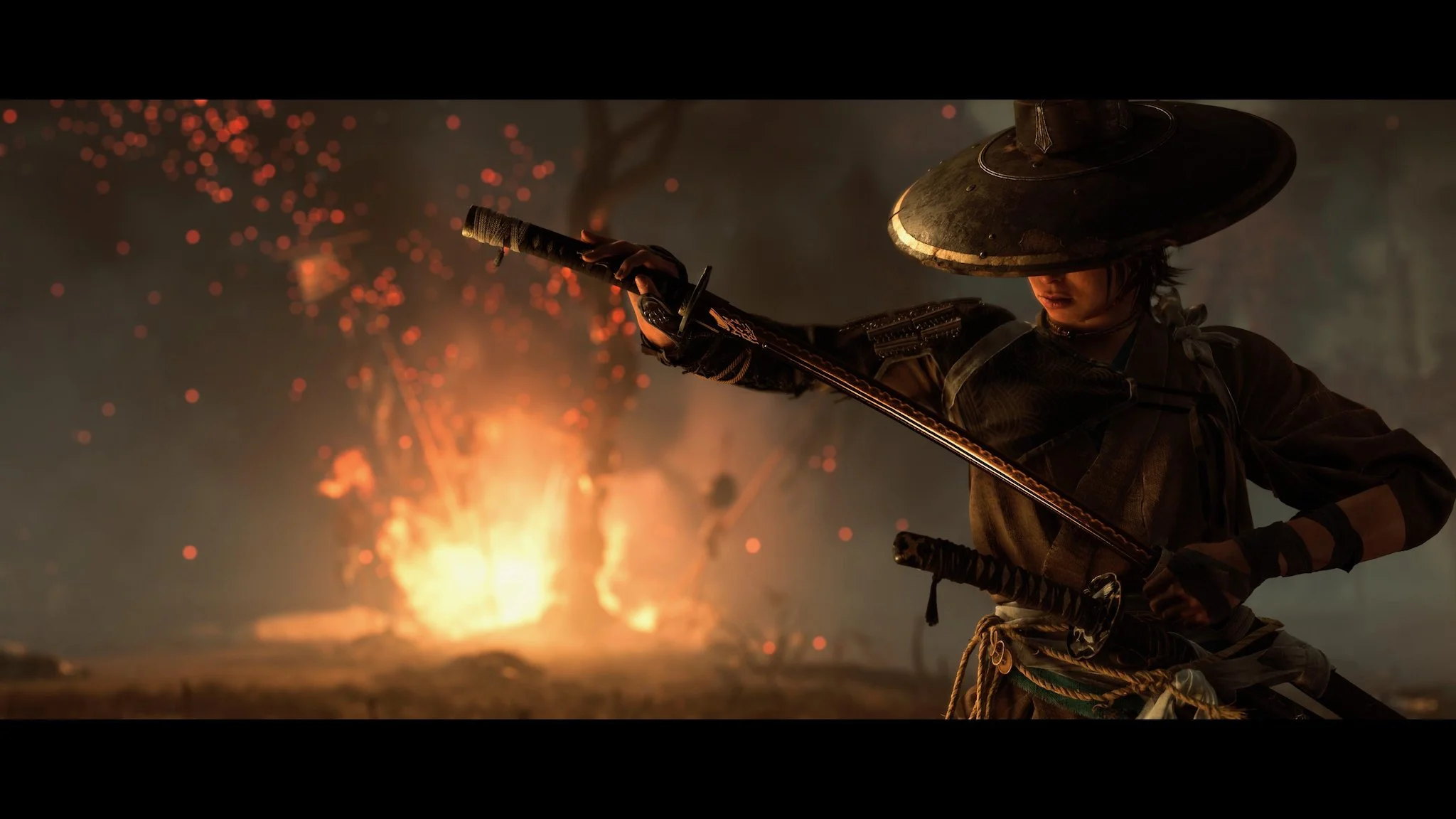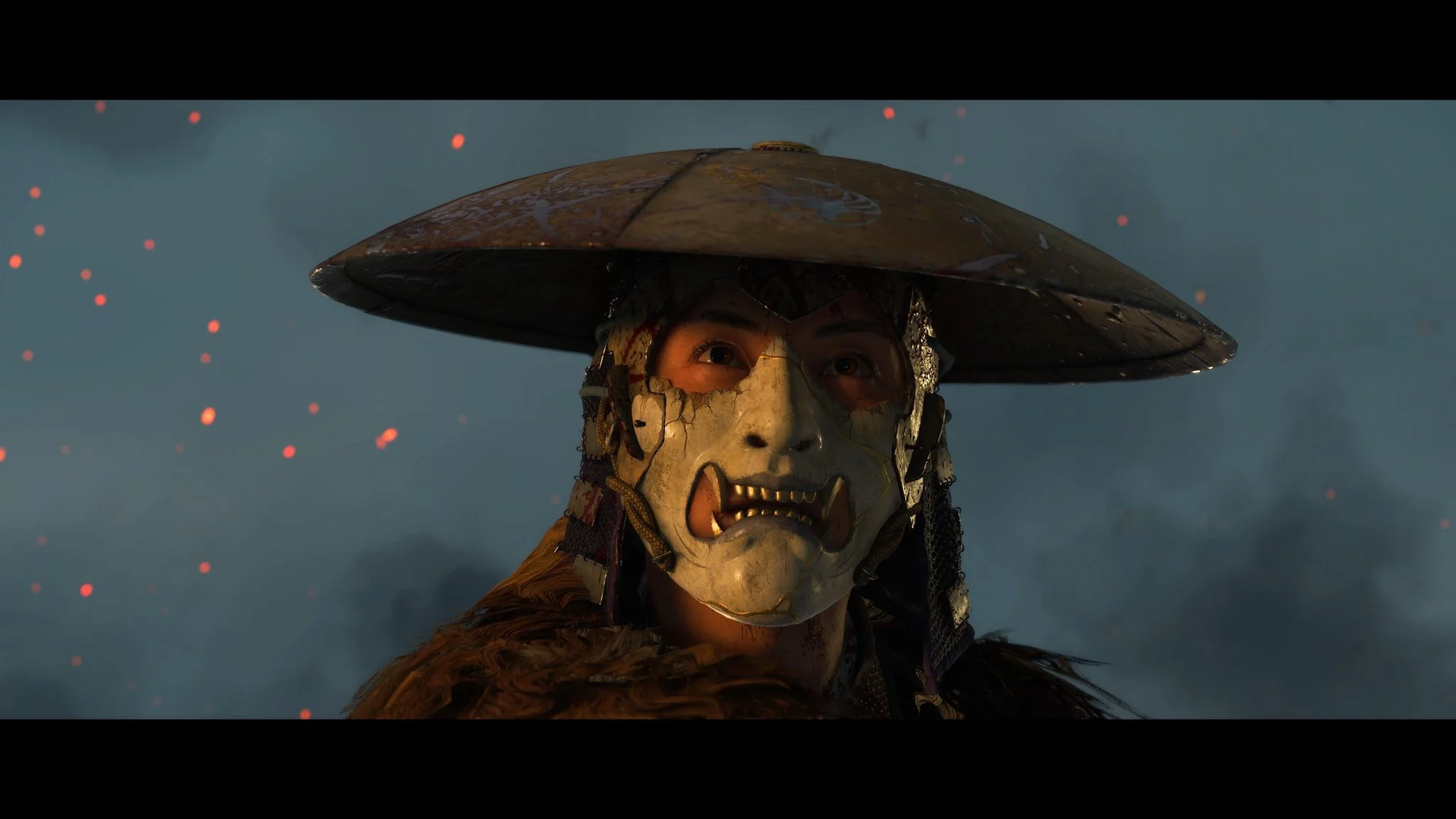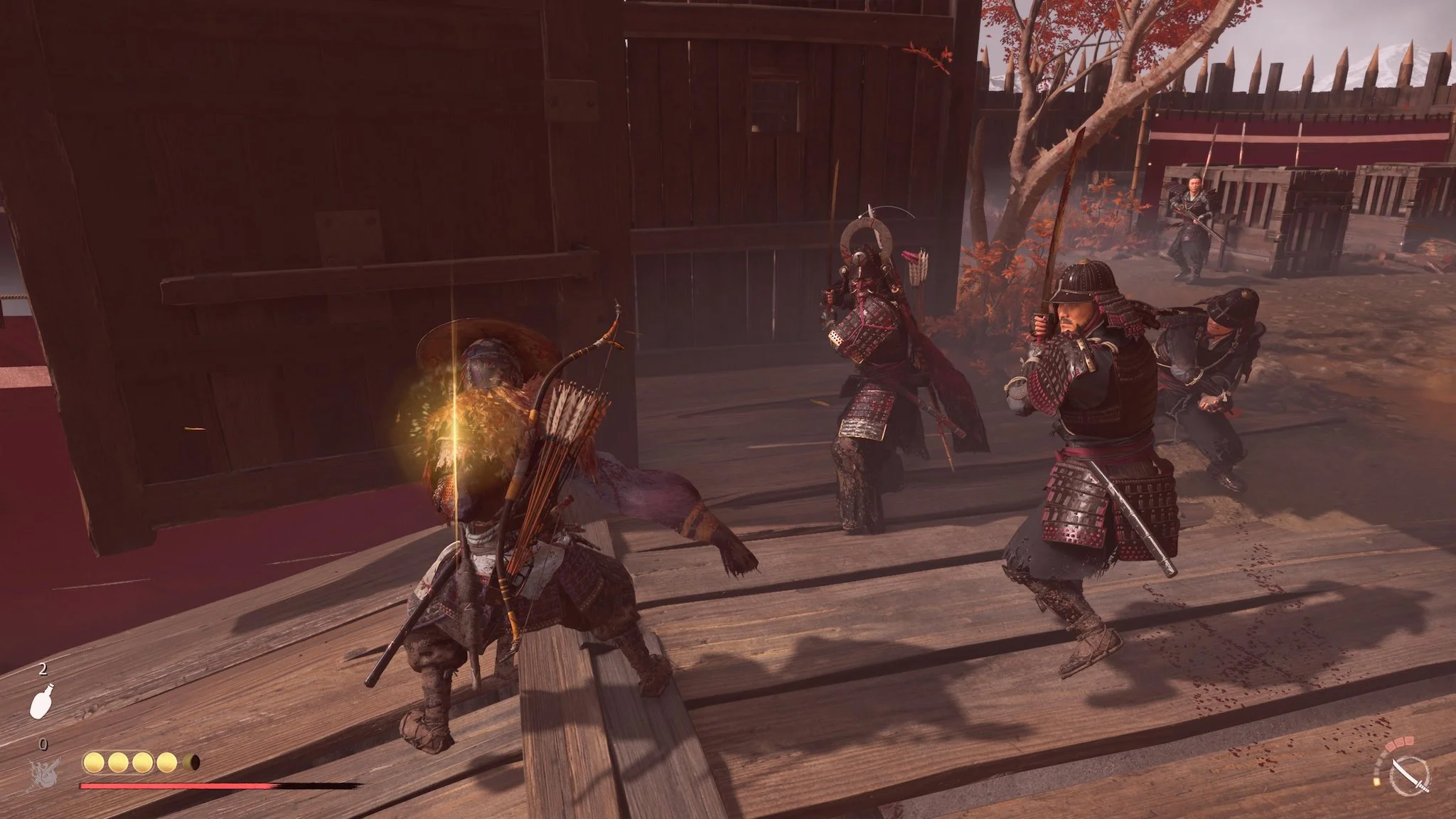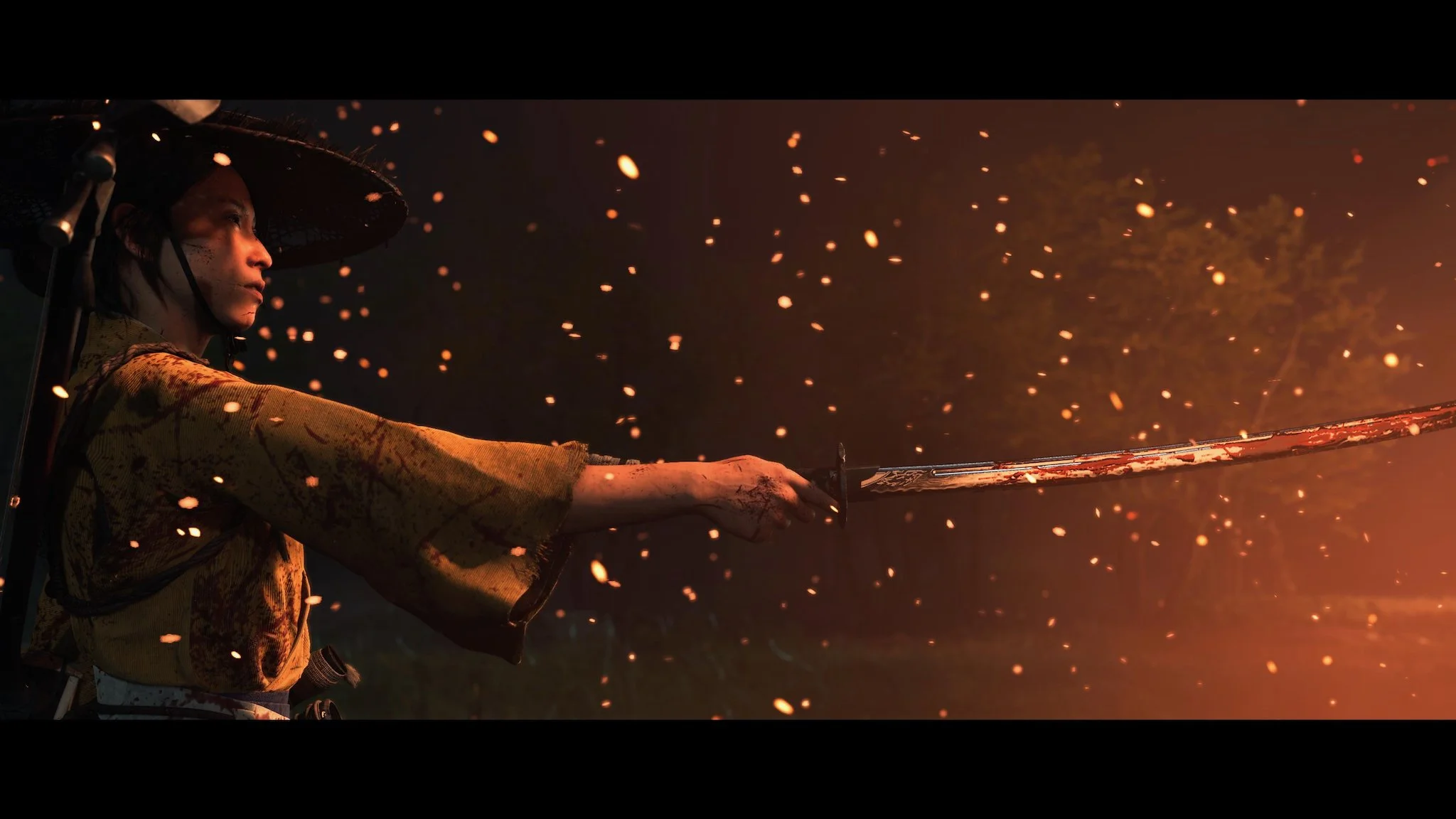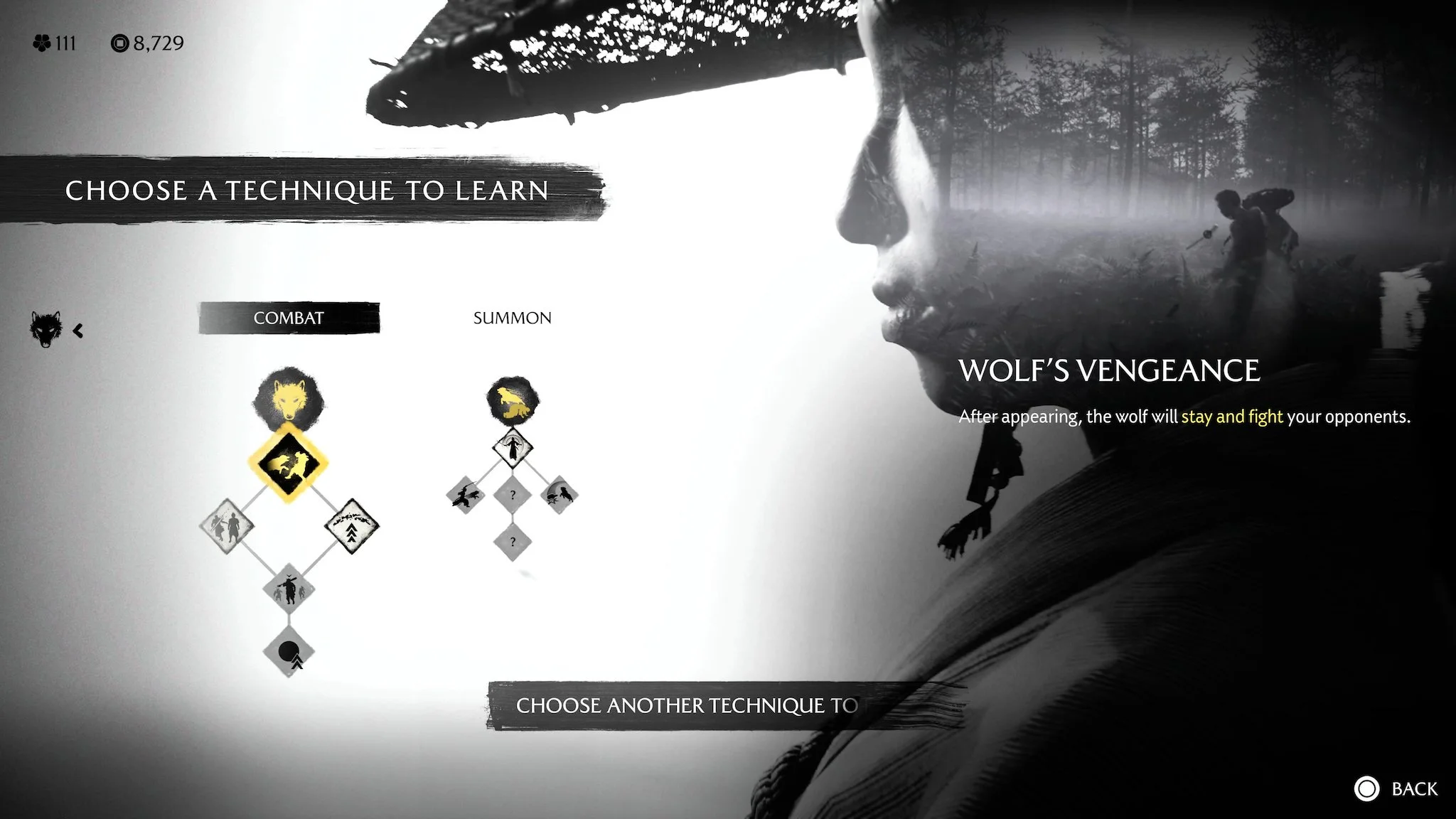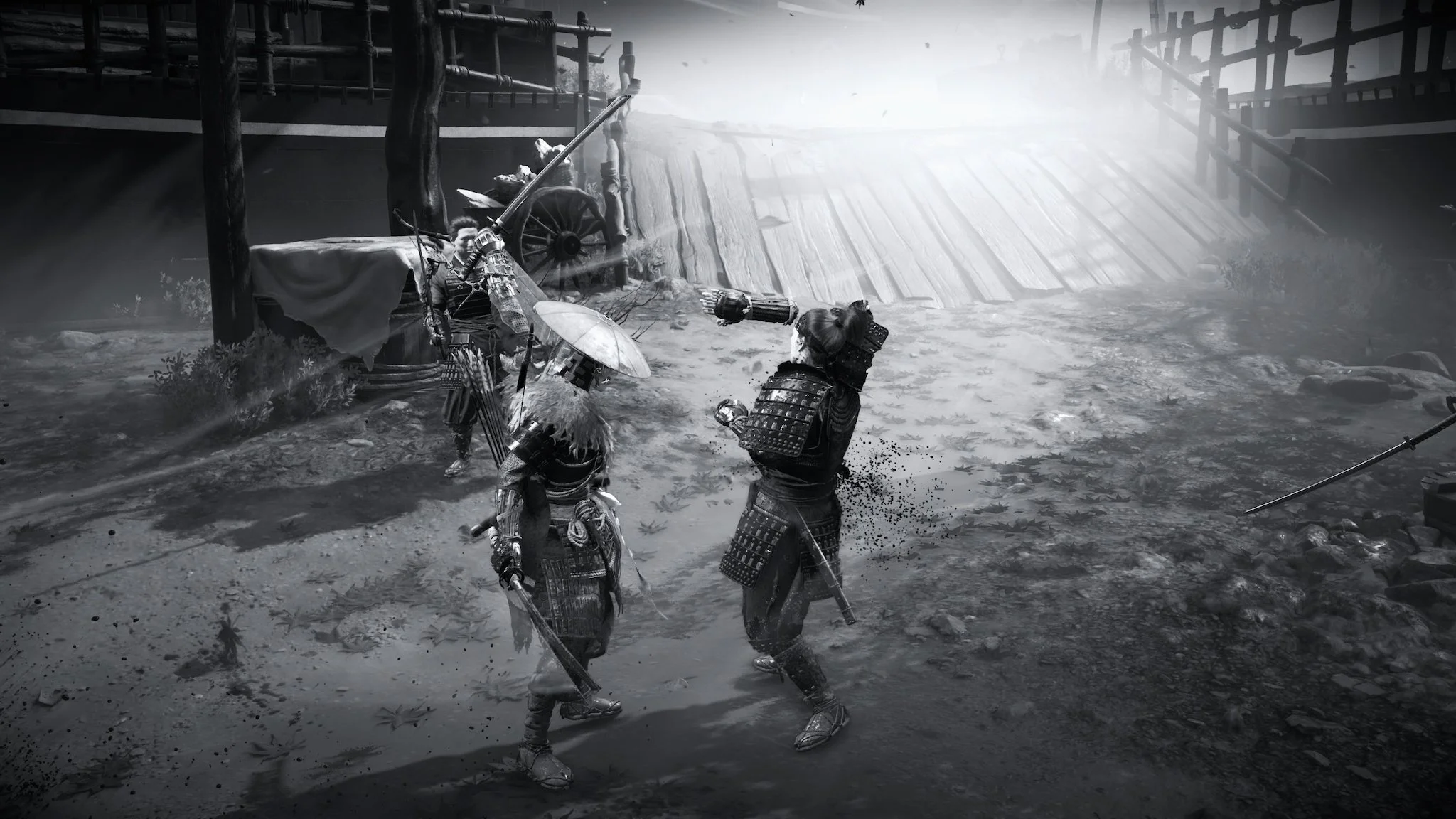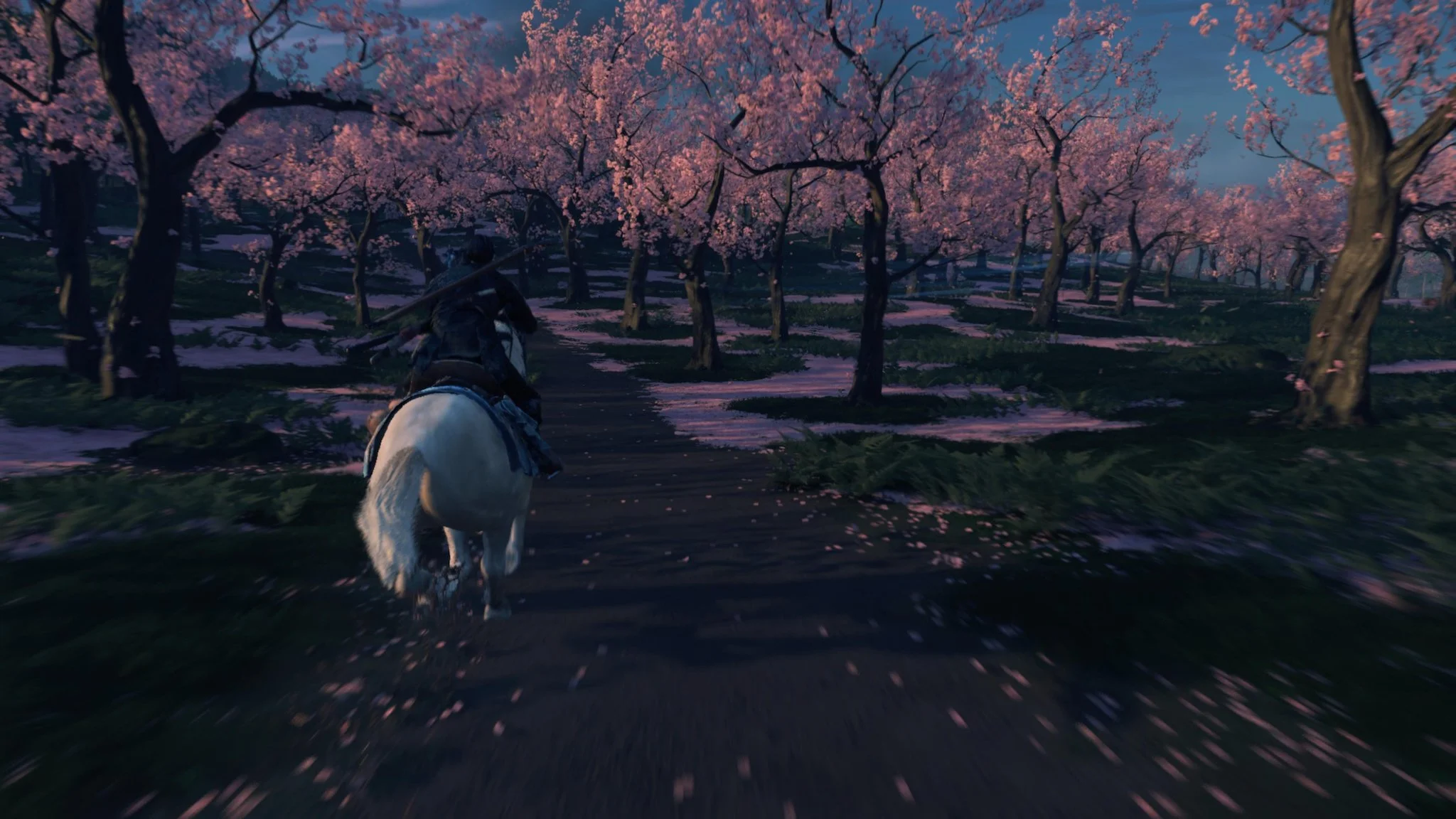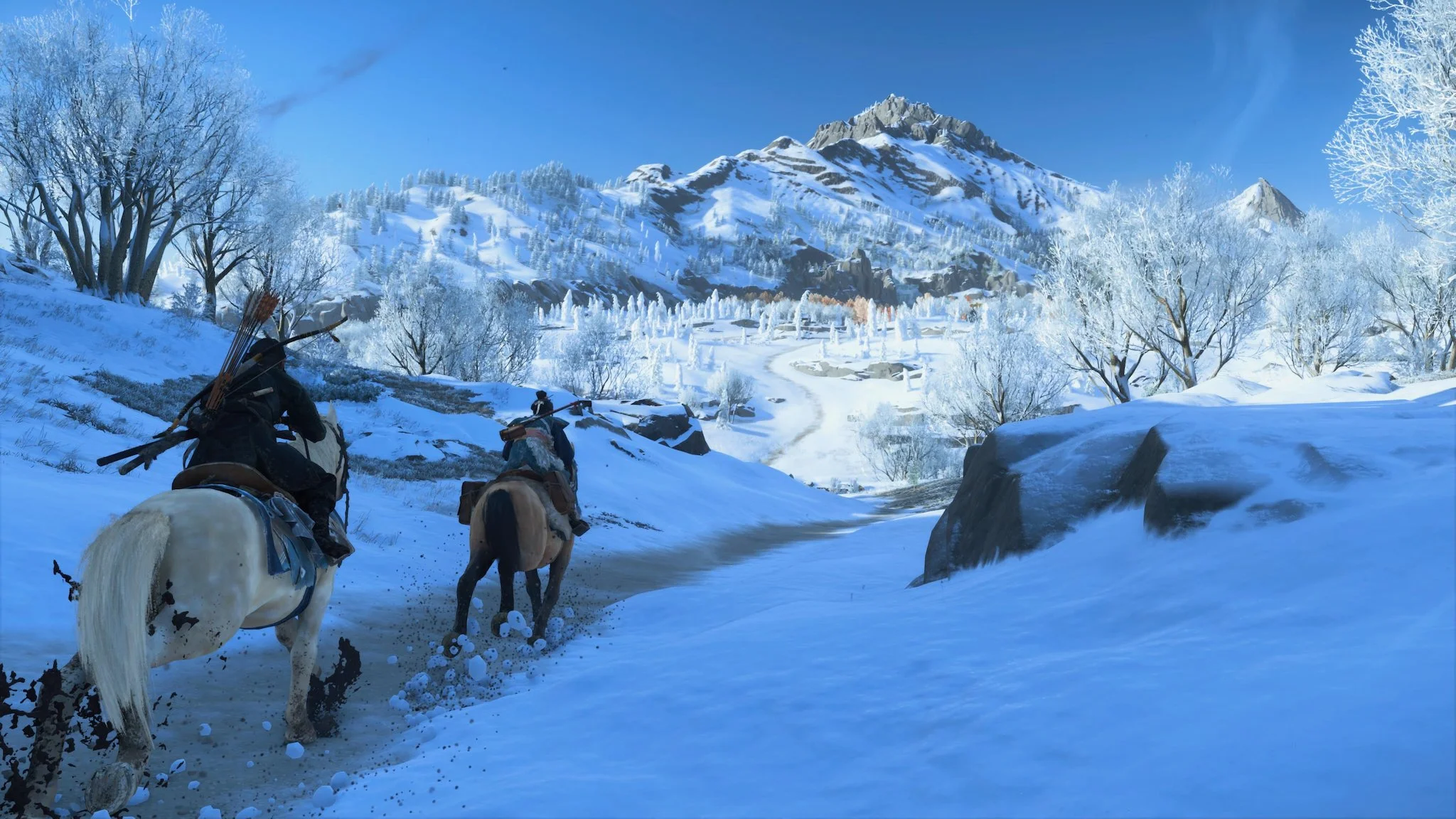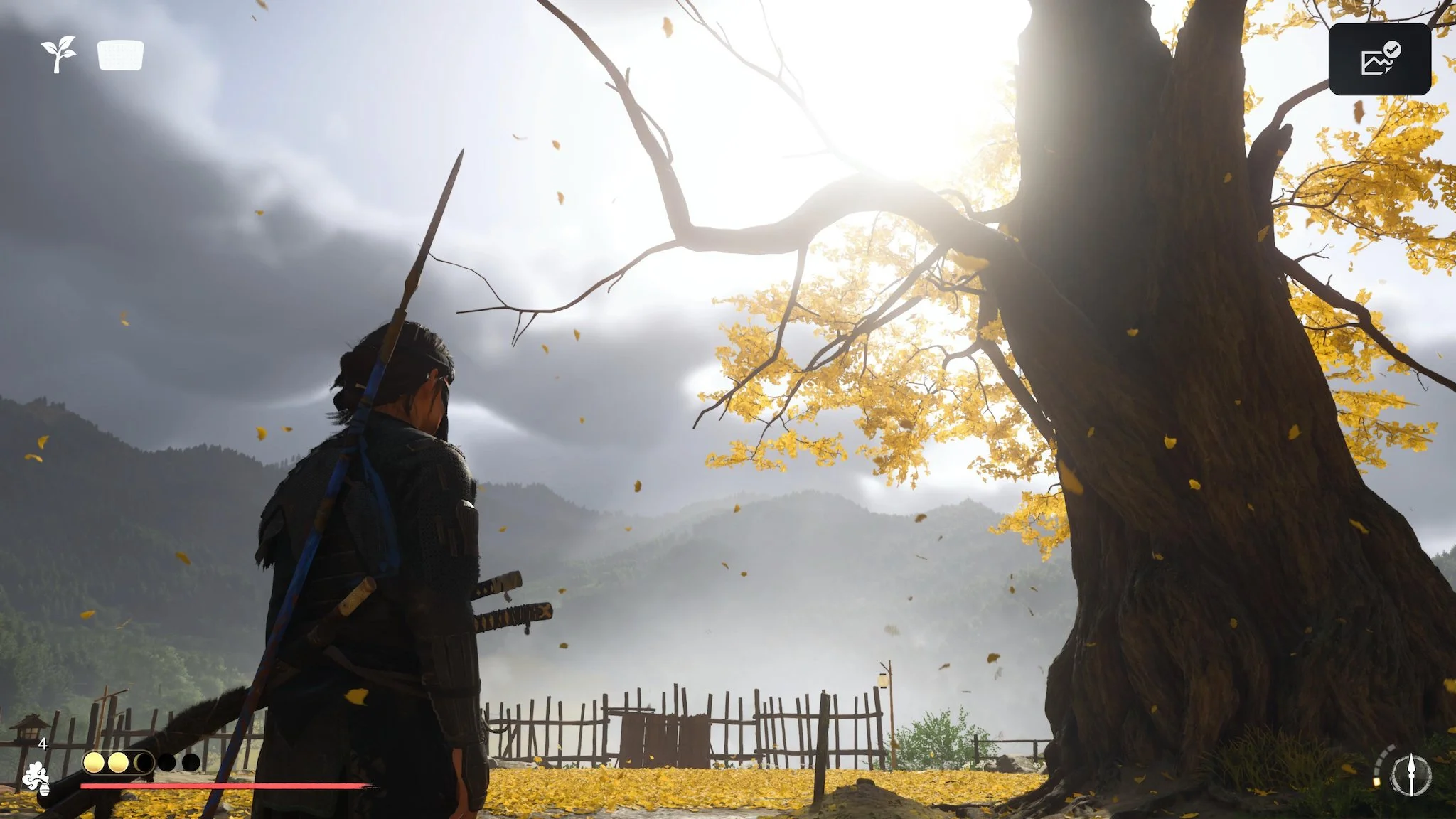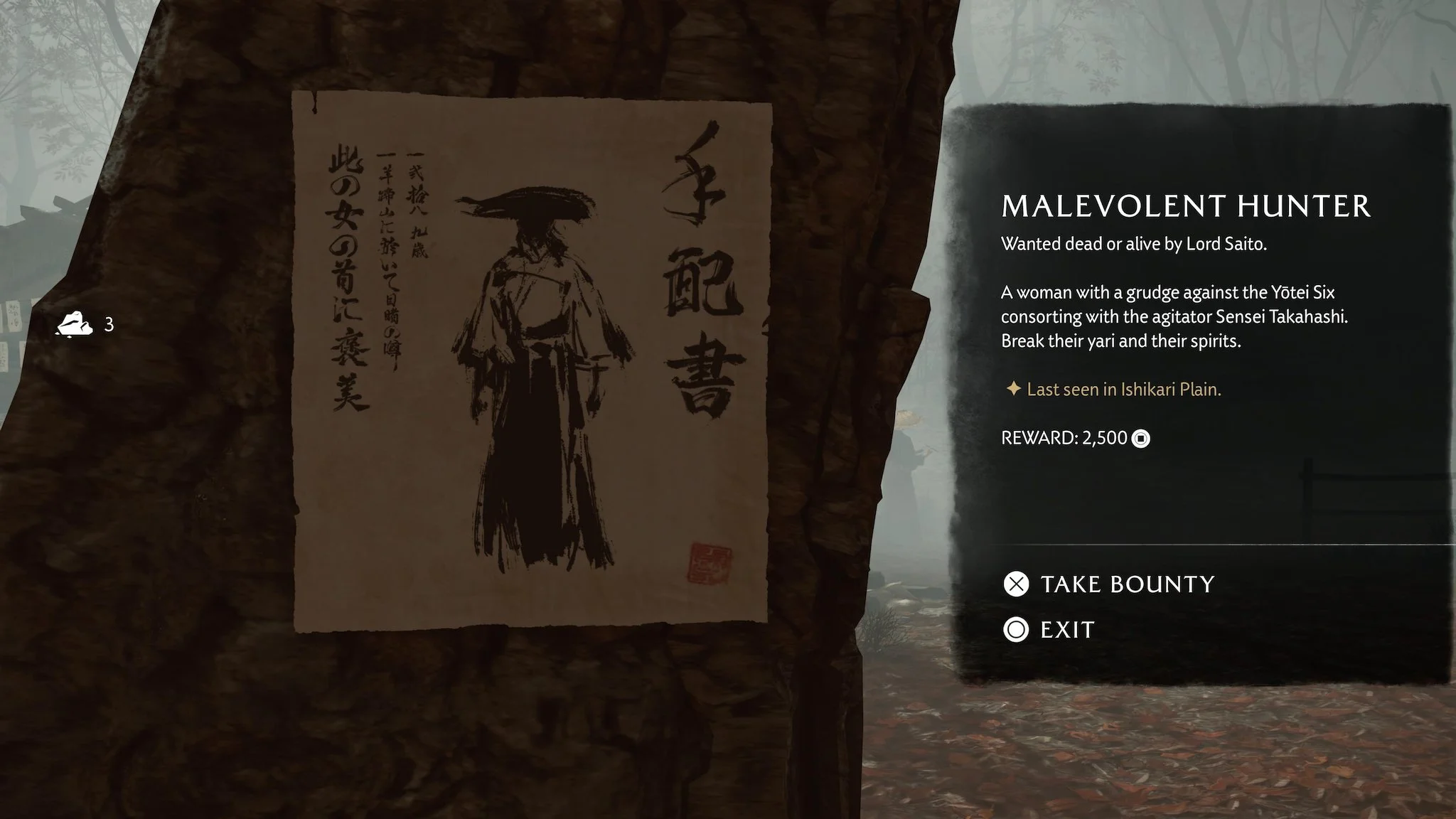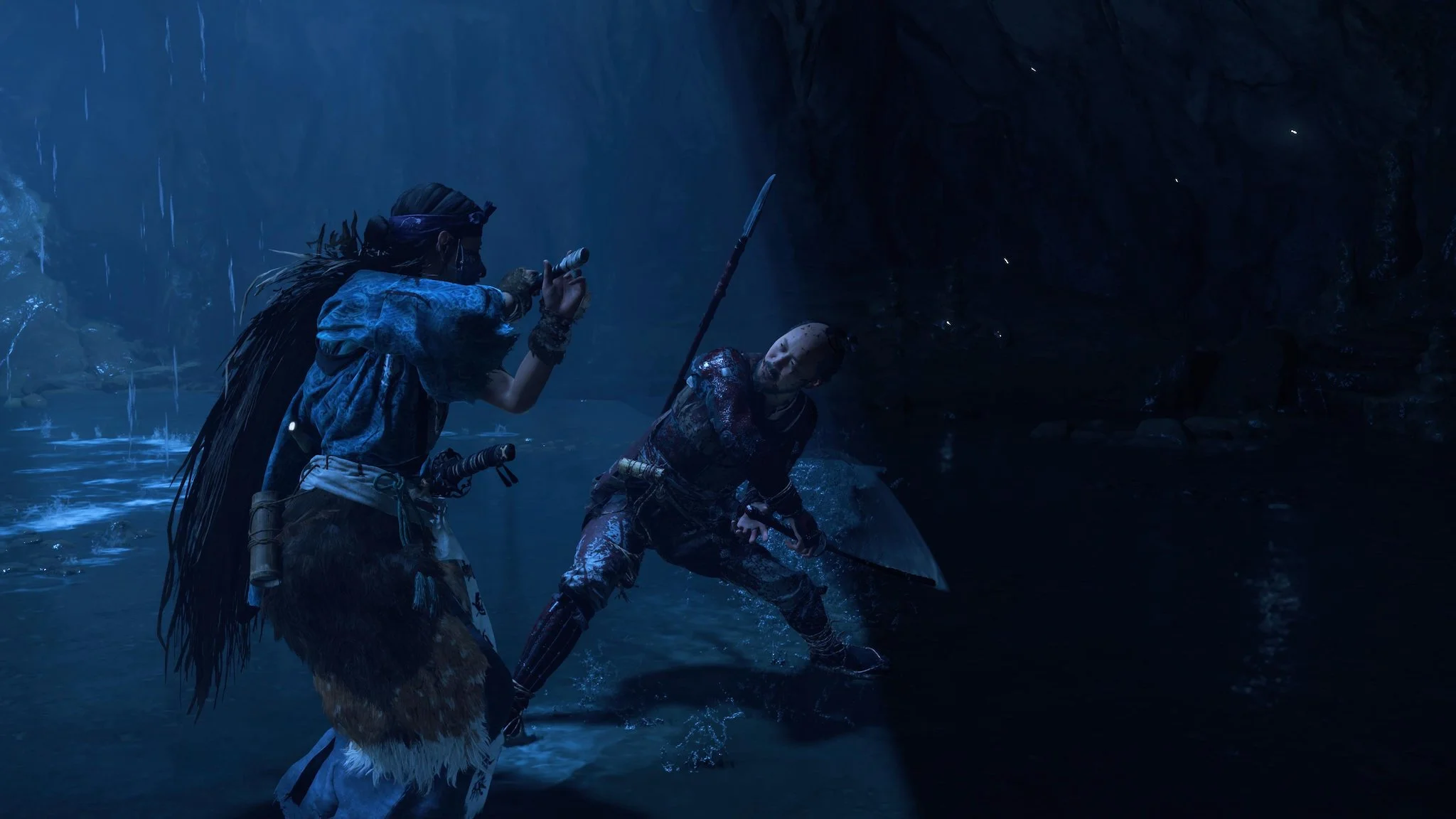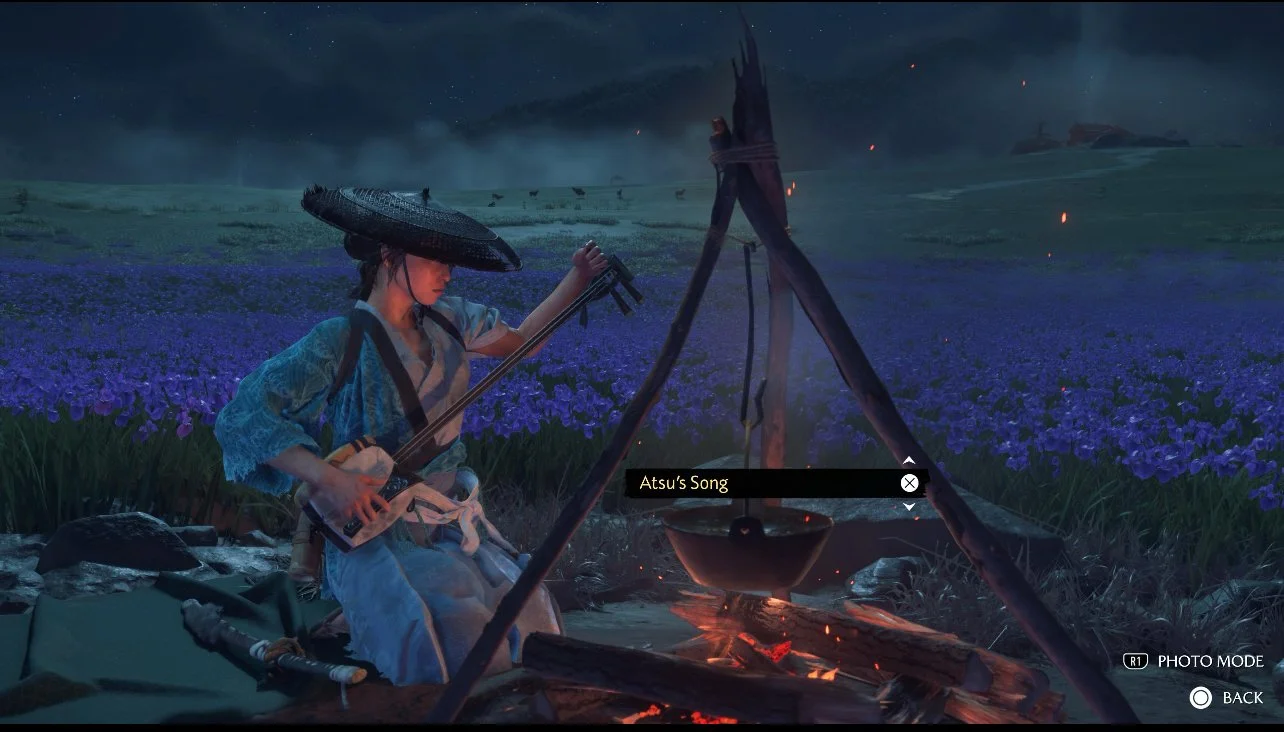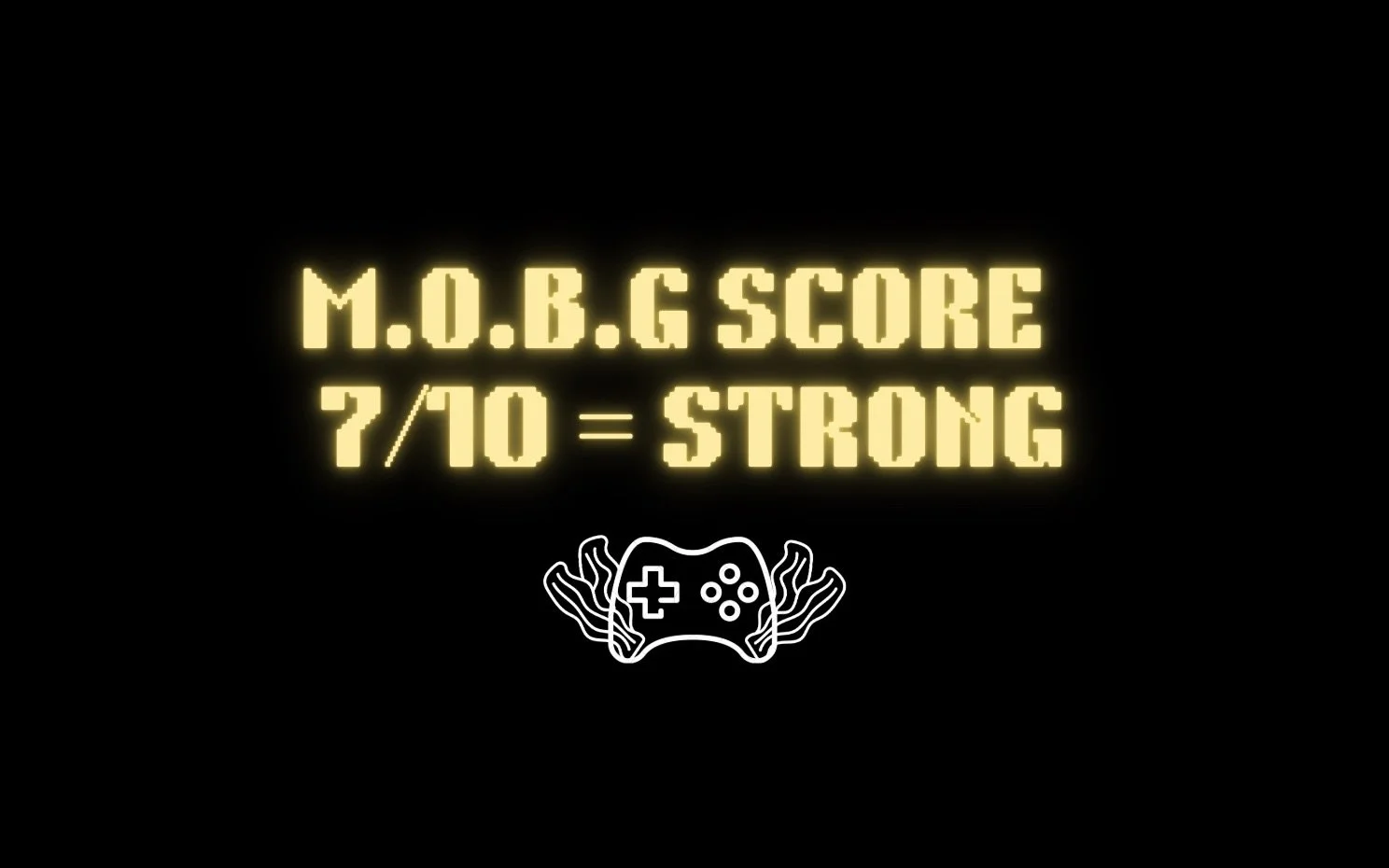ghost of yotei review - an iterative experience that i wanted more from
PLATFORM: PS5
HOURS PLAYED: 27
The question surrounding Ghost of Yotei is the same question that surrounds any follow-up or sequel: Is it a game worth jumping into after completing the original experience? Before playing Ghost of Yotei, I would have told you that the obvious answer to this question is yes, because even though I felt that Ghost of Tsushima was a pretty flawed experience, I found its interesting historical setting, jaw-dropping visuals, fun combat, and intriguing story themes to be enjoyable enough to want more of it in a follow-up. However, after spending roughly 30 hours in Ghost of Yotei, answering this question has become a much more complicated affair. Simply put, Ghost of Yotei is, well, more Ghost of Tsushima -- especially when it comes to visual design and how it wears its influences of classic Japanese samurai cinema on its sleeve, or sash to be more accurate. However, while Yotei carries over several of Tsushima's core tenets, it reimagines them in ways that feel like the experience as a whole has taken an unfortunate step back. I give credit to developer Sucker Punch for trying to change up its approach to things, but the result feels more like an iteration that misses the mark rather than an innovation that moves the series forward. So, if you enjoyed Ghost of Tsushima, should you play Ghost of Yotei?
A Familiar Tale of Revenge - Ghost of Yotei Story Analysis
Ghost of Yotei takes place in Ezo, Japan, roughly 300 years after the events of Ghost of Tsushima. This time around, you play as Atsu, a wandering ronin hellbent on avenging her family after they were tragically murdered before her eyes at the hands of a group known as the Yotei Six. After the murder, Atsu flees to southern Japan, where she survives as a mercenary soldier. 16 years later, she returns to Ezo with the strength of a seasoned fighter ready to hunt down the Yotei Six and avenge her family. The opening moments of the game play out the murder in somewhat vague detail, but with just enough shown to the player to get them onboard with Atsu's revenge plot. It's a setup that feels very familiar and takes its inspiration from experiences such as Sifu, The Last of Us, and countless other games and movies defined by their revenge plots. Though, despite the familiar tone it set for itself, I held out hope that eventually, the story would go on to break free of the well-known tropes of the genre.
Much in the same way The Last of Us sees Ellie violently thrust onto an all-consuming path of revenge, bearing witness to the ruthless murder of her family forces Atsu to do the same. However, where both protagonists' journeys see them battle the whirlwind of feelings surrounding their respective losses, the way in which those feelings are explored feels very different. By the time Sucker Punch began to display Atsu as a character with emotional depth, I had nearly written her off as a one-note protagonist. From tiffs with low-level enemies to important conversations with major story characters, Atsu's dialogue with these figures is comprised mostly of an obsessive push for information about the Yotei Six, or about how they must pay for their crimes. As a result, many plot lines that could have been fleshed out more deeply end up taking a back seat at the expense of keeping Atsu's revenge plot front and center.
For example, Saito murdering Atsu's family is low on the totem pole compared to his real goal, which is to build an army strong enough to overthrow the Shogun. It's an overarching plot that could have strengthened Yotei's world-building much in the same way the Mongol invasion did for Tsushima, but given how little attention is actually given to it, the scope of Yotei's world feels narrow and like a missed opportunity to be something far more intriguing as a result. Despite all of that, Sucker Punch DOES eventually create emotional depth for Atsu, even if it feels like they nearly took too long to do so.
As Atsu makes her way down her list of Yotei Six targets, she is accompanied by key side characters that aid her in various ways. At first, these side characters collide with Atsu's obsession for revenge like an immovable object colliding with an unstoppable force. As events unfold, however, these side characters begin to crack Atsu's emotional armor, showing that there is indeed something more than just rage beneath the surface. The first REAL moment of this comes by way of a touching sequence that occurs after you hunt the Kitsune. This arc sees Atsu explore the contentious relationship she has with her Shamisen, a traditional Japanese three-stringed instrument her mother taught her to play as a child. At the conclusion of this part of the story, Atsu composes a song made up of lyrics that help her reflect on her mother's death. The result is a display of emotions that reveal a side of Atsu we haven't seen, and one I wasn't sure the game was going to show us. It's a version of Atsu that can confront her feelings and can honor her mother's memory in a healthy way rather than be controlled by the condemnation she feels about her death. Arriving at these moments helped me gain the appreciation for Atsu's journey that I was hoping to have. But despite how well Yotei hits all the time-tested revenge plot beats, from obsession with revenge to acceptance of loss and everything in between, it still lacks the X-factor that takes it from a good, familiar-feeling story to a great tale that demands to be unforgettable.
What gives a Sucker Punch "Ghost" tale its distinct identity? In my opinion, it's how each game's protagonist earns their Ghost moniker. In Tsushima, the internal struggle Jin faces to contend with the Samurai code forces him to wear his Ghost title like a crown of thorns, resulting in a gripping emotional story I struggled to look away from. In Yotei, Ezo's inhabitants paint Atsu as the Ghost because of her hunt for the Yotei Six. Given that the group is disrupting peaceful life for the sake of overthrowing the shogonute, many of Ezo's inhabitants are overjoyed to welcome a "hero" willing to stand in their way. The issue with this is that taking down the Yotei Six was something Atsu was hellbent on doing anyway, and as a result, having the Ghost title attached to her name doesn't hold much personal meaning for her. Sure, there are moments throughout the game where she'll make remarks about her not seeing herself as the Ghost she's been labeled as, but none of these reflections result in an emotional arc that drives any substance for her character.
It's all the more frustrating then, when the game explores what it means to pursue revenge at any cost while failing to connect that theme to what it means to be the Ghost, because well, in this story, that’s exactly what it means to be the Ghost. Yet, Atsu never has a moment where she reflects on this, resulting in a narrative misstep that could have added much-needed purpose to her Ghost moniker. Without placing any substantial meaning behind that title, the story as a whole fails to break the boundaries of its common revenge plot structure, making it feel like a painfully familiar story even while experiencing it for the first time.
Walking away from Ghost of Yotei, I felt that overall, its story took a step back from the quality that Tsushima's tale delivered. I'm not suggesting that Yotei's story is bad; in fact, objectively speaking, I feel it's a good story that is well told through interesting moments and characters. It just feels too familiar, and as the follow-up to a game that featured such thrilling emotional twists and turns, I was disappointed to see Sucker Punch not deliver on that front with Yotei. It lacks the X-factor, that special thing that gives its defining tenant, the Ghost moniker, any substantial meaning for both its main protagonist and for me as the player. What's more, Erika Ishii gives nothing short of a commanding performance as Atsu, making it as easy as it is heart-wrenching to feel her rage right to my core. Delivered equally as convincing are her tender moments of reflection -- I just wish there were more of them to witness to balance out the game's emotional palette.
Combat - An Iterative Experience That Still Hits
Where Tsushima failed to grab me with its story structure, it captivated me with its crunchy combat feel. Landing a perfectly placed, masterfully timed katana strike into my enemy never failed to make me feel powerful. So, I was delighted to see that experience make its way into Yotei. Overwhelming an enemy with katana strikes to break their guard, or landing a well-placed arrow shot from impressive distances, has never felt better, and I made sure to take every opportunity Yotei gave me to flex that combat feel. Yotei also introduces a roster of rotating weapons for Atsu to make use of, including a katana, dual katanas, an odachi, a yari, and more. Where Tsushima had you switch to the appropriate stance to contend with the variety of weapons wielded by your enemies, Yotei tasks the player with selecting the best weapon in real-time to gain the advantage. Is your enemy charging with kusarigamas? Pull out your yari to break their guard. Going toe to toe with a brute? Unsheathe your odachi to overcome their overwhelming size and strength. But while Yotei's system of rotating weapons provides more depth for the combat experience on paper, I didn't find it to be quite as fun in practice.
The thing I loved most about Tsushima's combat was how mastering its stance system made each fight feel like a river, steadily flowing with a current of satisfying katana strikes. By comparison, Yotei's weapon rotations feel cumbersome, with each weapon swap delivering a somewhat awkward break in the flow of combat. Additionally, I felt that Atsu having a suite of weapons in her arsenal at all times weakened the significance of her katana, a sword passed down to her by her father before his life was taken by the Yotei Six. Character moments that could have been dedicated to exploring Atsu's relationship with that katana are replaced with training arcs crafted to highlight the specialties of each of Yotei's unique weapons. To be clear, I quite enjoyed these training arcs, as they're each thoughtfully and cleverly designed to immerse the player in what it means to master that specific weapon -- like how spear fishing and painting practice helped Atsu master the Yari, and so on. I suppose I would have liked to have seen more of a balance when it came to how Atsu developed her skills with her katana throughout the story.
Supplementing Yotei's weapon rotation system are its skill trees and charms, each designed to provide Atsu with a suite of buffs to give her the edge in battle. Skill tree upgrades can be accessed by visiting altars of reflection, which are scattered throughout Ezo's countless nooks and crannies. Since I tend to favor forward combat, I spent most of my points in the katana skill tree under the melee combat path. I also made sure to unlock Onryo's Strike as soon as possible, as it gave me the ability to disarm enemies with a single strike -- perfect for my aggressive play style. Whether you're an offensive forward fighter like myself, or a more patient swordsman who prefers to levy patience for parries, the Yotei's skill trees offer a wealth of upgrades to fit your play style.
Looking to enhance your effectiveness in battle? Charms can help! Equipping major charms will add a +10 bonus to your skills, while adding a minor charm will add a +5 bonus. Like with its skill trees, you can select your charms based on your play style. If you prefer to play aggressively, equipping any charm that grants you +10 defense can help offset the risk of exposing yourself to an attack. Each charm also comes with a side benefit to further add to its effect -- such as the Charm of Masakado, which provides a full health refill upon activating an Onryo ability. On their own, these charms won't deliver upgrades substantial enough to turn the tide of any given battle, but by stacking them together efficiently, you can augment your skills just enough to give yourself an edge when you need it the most.
So, when looking at Yotei's combat system as a whole, I do feel that it takes a step back from what Tsushima delivered. Despite the moment-to-moment combat feeling great, and the charm system and skill trees offering subtle but meaningful ways to tailor my abilities to my preferred playstyle, none of these components could overcome my disdain for the weapon rotation system and how cumbersome it feels. I can certainly appreciate Sucker Punch wanting to shake things up, but this new weapon system feels more like an iteration that misses the mark instead of an innovation that moves the formula forward. Credit where credit is due, striking an enemy down in Yotei still feels wonderful, I just wish I could get the job done without having to sheathe my katana in favor of a weapon I'd prefer not to use.
Visuals - Beauty Without Feeling
The version of Ezo depicted in Ghost of Yotei is absolutely breathtaking. From the ever-looming beauty of Mount Yotei herself to the blissful, vibrant, ice-cold visuals of Teshio ridge, and everything in between, each of the game's regions boasts a visual feast for the eyes. However, right from the get-go, I noticed something different about how Yotei presents its visuals compared to its predecessor. It feels more distant and less intimate. After about 10 hours of exploring Ezo, I came to realize that Yotei places less of an emphasis on its beauty than Tsushima does. In Tsushima, you're treated to a healthy swath of sequences devoted to artfully showcasing its masterful visual design -- like the flashback sequence that shows Lord Shimura teaching Jin the art of swordplay set dressed with breathtaking nature that nearly creates a state of hypnosis. Ghost of Yotei features an unfortunate lack of moments like these, resulting in an experience that renders its visuals to the backseat. To be clear, Sucker Punch made an absolutely beautiful game here, and maybe this is a case of lightning not able to strike twice, in which case, you can't really blame them. And there are some moments where Atsu takes in the world around her so the player can appreciate it too, and others like how the game's aspect ratio tightens whenever you mount your horse to provide a more cinematic feel, but they just don't do enough to place the stunning beauty of Sucker Punche's rendition of Ezo front and center like it deserves to be.
World Design - Is Ezo Alive?
One of my biggest complaints about Ghost of Tsushima was that its open-world checklist design deterred me from wanting to explore it. Well, I wanted to give it a second chance by way of making sure I explored Yotei's Ezo as much as possible. Thankfully, this game's open world design feels less checklisty; even though there technically are lists of tasks to accomplish, they're laid out in a way that feels less laborious. Rather than a standard list of things to do, tasks are detailed in cards that reside in the bottom left corner of the map. Should you want to access these tasks, you can shuffle through them like a deck of cards -- a nice touch that makes wading through them more enjoyable. Did I actually do more open-world stuff in Yotei? Well, yes, at least at first. Between bounty hunts, searching for altars and wolf dens, and discovering bamboo sites, I got my fill quickly. I don't see this as a bad thing necessarily, as I got my fill by exploring everything without feeling worn out once I had seen it all.
If you enjoy Yotei's combat feel as much as I did, and are looking for a way to make some extra mon, then you'll enjoy the bounty system. Each town will feature a bounty board with a couple of names pinned to it at any given time. The process for carrying these out is simple enough -- you access the board, select the bounty you want to pursue, track it on your map, and get the job done. The bounties themselves can range from quick and simple takedown jobs to more elaborate affairs on par with proper side quests. One bounty I particularly enjoyed was that of Soma the Condemned -- a musician who is granted a magical flute that is said to provide the player with untouchable musical prowess, but at a cost. For Soma to be granted the flute's powers, he must continuously take lives. The fight and the cutscene dialogue that follow this bounty battle delivered a compelling side narrative that I found to be both enjoyable and worth my time.
Exploring Ezo naturally is much the same experience as it was in Tsushima. Riding aimlessly through the land, you'll happen upon golden birds that will gently guide you towards various points of interest -- like hot springs where Atsu will reflect on her journey and increase her health pool, or bamboo sites boasting the return of the infamous sword strike challenge, and more. New to the experience are wolf den points of interest. Upon arriving at these, you'll encounter a disgruntled wolf who will motion to you for help. In each of these encounters, the wolf will guide you towards a Saito camp where their fellow wolf pack is being held captive. Freeing the wolves will award you skill tree points that can go towards strengthening your bond with them. The stronger the bond, the more often the wolf will appear to assist you in battles out in the open world. Each of these POIs feels fun to explore, and never tries to drag more out of you as a player than you want them to. During my roughly 30-hour play-through, I probably spent 5 or so hours contending with these open-world events, and I still walked away feeling like I got plenty out of these experiences. Yotei's hands-off approach to its open-world design continues to result in an unobtrusive experience that the game is much, much better for.
Last, but certainly not least, are camps, a new addition to the Ghost open-world formula. Camping allows you to cook food, refill ammo, rest, and play your shamisen. However, whenever you camp, you'll be greeted by a traveler who will sit down at your fire...uninvited. Exhaust their dialogue, and they'll reveal a nearby POI for you to explore. At first, I enjoyed these little encounters, as they felt like an authentic, immersive part of the wandering experience. However, after the 10th or 11th wanderer approached my camp to let me know that a bamboo site was nearby, the encounter began to feel stale. While they approach, the game quickly cuts to Atsu contemplating grabbing her sword to defend herself. This got me thinking that perhaps an opportunity was missed with the camping mechanic. What if there were always a slim chance that the wanderer approaching your camp was actually an enemy looking to take Atsu out to collect her bounty? This would add a risk element to the experience that would make it feel more fun and more in-depth.
The Verdict
The question surrounding this review is whether or not you should play Ghost of Yotei if you enjoyed Ghost of Tsushima. As a whole, I feel that Ghost of Yotei takes a step back from what its predecessor delivered. Its story, while executing its revenge plot well, fails to break the mold of its time-tested formula, resulting in a tale that feels frustratingly familiar. The combat system, while boasting great feel, takes a step back owing to its cumbersome weapon-swapping mechanics. Its visuals, while clearly stunning, lack the presentation needed to make it stand out in a way that it deserves to. So naturally, it stands to reason that I would score this game lower than Ghost of Tsushima. But I actually don't think it would be fair to do that, because despite all of the shortcomings I've discussed, Ghost of Yotei is still an objectively strong game with each of its components boasting objectively strong execution. It just falls short when it comes to comparing it directly to its predecessor. Therefore, where I described Tsushima as being a very strong game, I feel it would be most appropriate to label Yotei as a good to strong experience by comparison. If you enjoyed Ghost of Tsushima and just want more of that experience but in a different package, Ghost of Yotei is basically that. However, I would recommend going into the experience with the understanding that Yotei may fall short of the heights reached by its predecessor in story, visual, and combat design. Nonetheless, I would still recommend Ghost of Yotei -- so jump on in and live out your wandering ronin fantasy!

